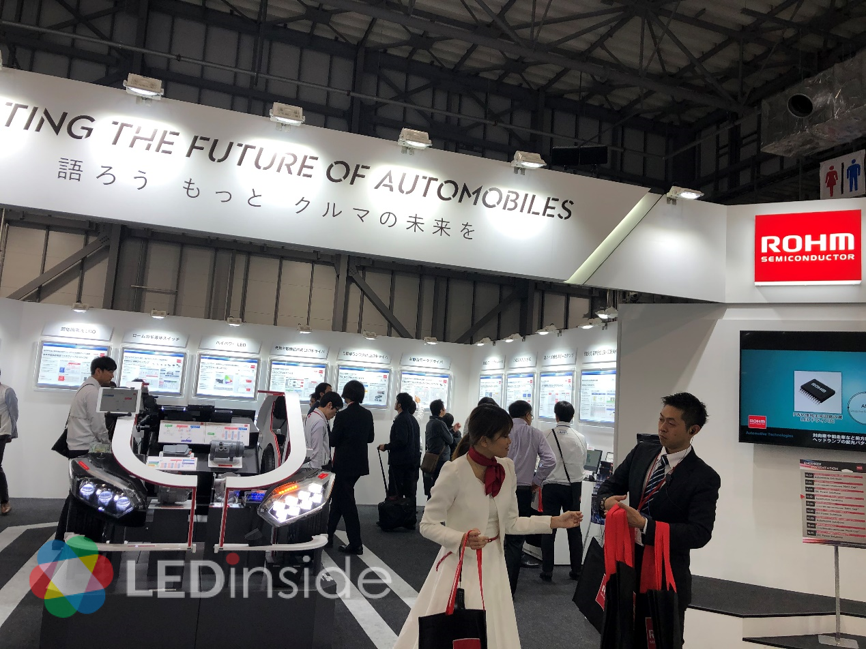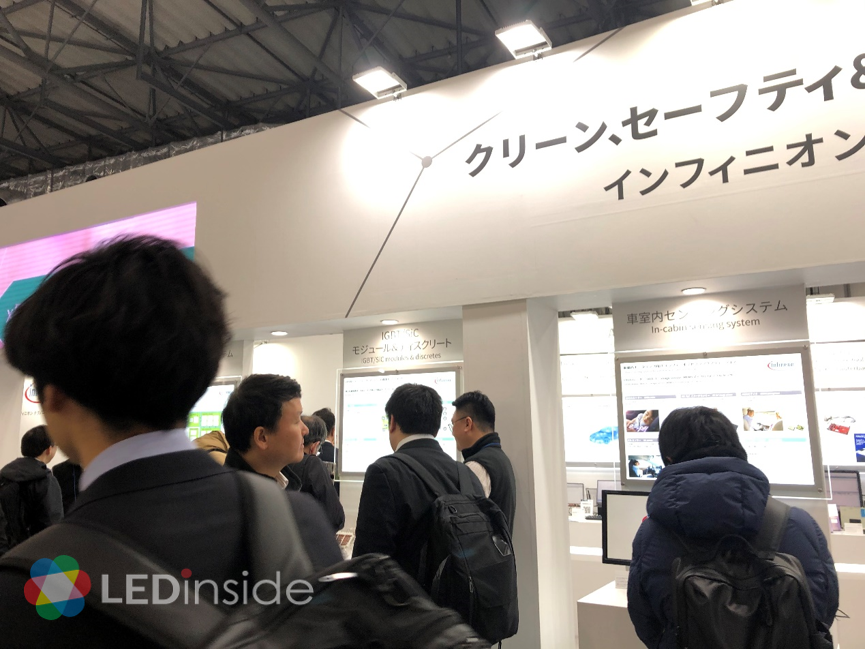One of the major focuses at AUTOMOTIVE WORLD 2020 was driver IC, who plays a critical role for automotive lighting technology. Driver IC companies across the world came to the event with their novel technology and components to simplify current management, improve the flexibility of light design and increase applications.
Rohm released a new four channel LED driver BD18337EFV-M, which its thermal dispersion outputs can be controlled by one pin to reduce component and installation area. The driver can be applied in rear lights including brake lights and taillights, fog light, direction light and more. The product has functions covering LED open test, OUTx (x=1-4) pin output protection, over-voltage mute, thermal shutdown and more, achieving high reliability.

Also, Rohm plans to debut BD18353EFV-M / MUF-M to support boost-buck control for headlights, daytime running lights, direction lights and fog lights. The LED current can also be adjusted through two DC light adjustment system, cutting down the number of component to save space for applications.
Infineon LITIX Basic + LED driver IC is the extension of LITIX™Basic series. With one to three output LITIX Basic + linear current stabilizer, the product helps to reduce system cost and has PWM dimming function.

SiC to Rise with Growing Demands in the EV Market
For the keep-growing EV market, Infineon not only revealed 650V and 1,200V SiC Discretes, but also develop CoolSiC MOSFET with SiC Trench technology to offer cost effective solutions with high performance, high reliability and high power density, targeting EV charging and power supply. The switch of CoolSiC MOSFET 1,200V has lower gate charge and capacitance, as well as lower switching loss.

STmicroelectronics introduce a series of verified power products. Its 1200V SiC MOSFET with low drain source resistance can effectively reduce switching loss and recovery loss while operating under 200 degree.

On Semiconductor has offered SiC MOSFET that meet AEC-Q101 standard. The product has 1200V high power and ultra-low drain source resistance.

Original article by Joanne Wu, Research Manager, LEDinside; translated and edited by Yining Chen, LEDinside





 CN
TW
EN
CN
TW
EN










